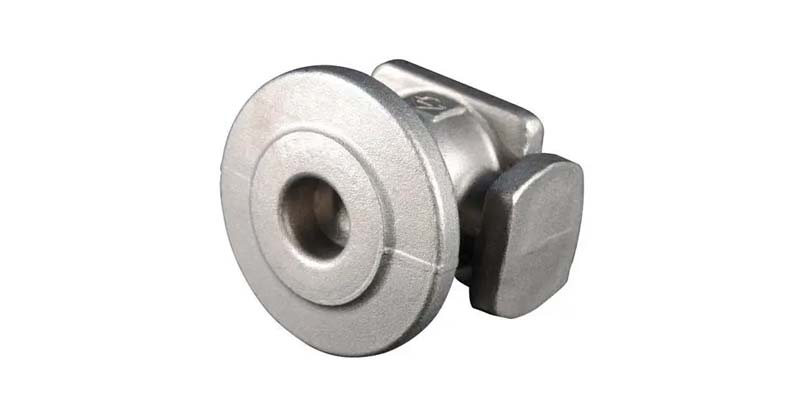- Contact Innally, Let you purchase forgings in China more favorable prices, products more assured!
- Hotline:+(86)15038323776 Email:innally@innally.com
Common defects and preventive measures of body parts forgings
- Category: Thermal forging, Titanium alloy forging
- |
- Date: 06/12/2023
common defects of body fittings forgings include cracks, pores, inclusions, dimensional deviations and surface roughness. In order to prevent these defects, measures should be taken to optimize the forging process, strengthen raw material control, strengthen lubrication and mold maintenance, strengthen quality inspection and control, improve the quality of employees, introduce new technologies and new materials, and establish quality management systems.
Product Details
In the valve manufacturing process, as a key part, the quality of the forging has an important impact on the performance and life of the valve. However, because the forging production process involves many links and complex processes, it is prone to various defects. This article will describe the common defects of body fittings forgings and their preventive measures to help improve the quality and reliability of forgings.
- Common defect types
Cracks: Cracks are one of the most common defects in forging and can be caused by too high forging temperature, too fast cooling rate, or too much stress generated during forging. Cracks can lead to reduced strength and durability of forgings, and in severe cases may lead to valve leakage or failure.
Porosity: Porosity is the void formed by the failure of gas to completely discharge during the forging process. The porosity will cause the density of the forging to decrease, affecting the strength and sealing performance.
Inclusions: Inclusions refer to foreign bodies, such as oxides and sulfides, that are mixed into forgings during the forging process. Inclusions reduce the strength and corrosion resistance of forgings.

Dimensional deviation: Dimensional deviation may be caused by mold wear during forging, insufficient equipment accuracy or improper operation. Size deviation will affect valve assembly and sealing performance.
Rough surface: Rough surface can be caused by mold wear, poor lubrication or uneven cooling during forging. The rough surface will affect the sealing performance and appearance quality of the valve.
Ii. Preventive measures
Optimize the forging process: select the appropriate forging temperature, cooling speed and forging speed and other process parameters to ensure that the forging structure is uniform, dense and without defects. For large forgings, processes such as segmental forging or multi-directional forging can be used to reduce the risk of cracks.
Strengthen raw material control: Select high-quality raw materials and ensure that their chemical composition, mechanical properties and metallographic structure meet relevant standards. Strict quality inspection and control of raw materials to avoid the use of inferior materials or materials that do not meet the requirements.
Enhanced lubrication and mold maintenance: Use appropriate lubricants during forging to reduce mold wear and surface roughness. Regular mold inspection and maintenance, timely replacement of severe wear mold.
Strengthen quality testing and control: The use of advanced quality testing means, such as ultrasonic testing, magnetic particle testing and non-destructive testing, to carry out comprehensive testing of forgings to ensure that their quality meets the requirements. For the detected quality problems, timely analysis of the causes and take corresponding improvement measures.
Improve the quality of staff: strengthen staff training, improve their understanding and attention to the quality of forging and valve performance. Enable employees to identify and deal with quality problems, to ensure that problems can be found and resolved in a timely manner during the production process.
Introduction of new technologies and new materials: Pay attention to industry dynamics and technology development trends, introduce new technologies, new materials and new processes to improve the quality and performance of forgings. For example, advanced technologies such as precision forging and isothermal forging can improve the dimensional accuracy and surface quality of forgings.
Establish quality management system: Establish a sound quality management system, including raw material warehousing inspection, production process monitoring, finished product inspection and other links. Through continuous improvement and optimization of quality management system, ensure the stability and controllability of forging production process.
Strengthen supplier management: Establish long-term and stable cooperative relations with suppliers to jointly improve the quality level of forgings. Conduct regular assessment and audit of suppliers to ensure that their production process and quality management meet relevant requirements.
In short, common defects of body fittings forgings include cracks, pores, inclusions, dimensional deviations and surface roughness. In order to prevent these defects, measures should be taken to optimize the forging process, strengthen raw material control, strengthen lubrication and mold maintenance, strengthen quality inspection and control, improve the quality of employees, introduce new technologies and new materials, and establish quality management systems. Through the comprehensive application of these preventive measures, the quality and reliability of the valve body parts can be effectively improved, thereby improving the overall performance and quality of the valve product.
nannan
INNALLY mainly provides you with various types of cast and forged parts products. Welcome your inquiries! innally@innally.com
Related Products
Search
Forging center
- Steel forgings
- Aluminium alloy forging
- Titanium alloy forging
- Stainless steel forging
- Copper forging
- Automotive forgings
- Locomotive forging
- Bicycle forgings
- Motorcycle forging
- Rigging and fasteners
- Bearing forging
- Electric power fittings
- Marine forging
- Mechanical forgings for metalworking
- Mining machinery forgings
- Marine engineering forgings
- Construction machinery forgings
Popular product

© 2025. All Rights Reserved.






